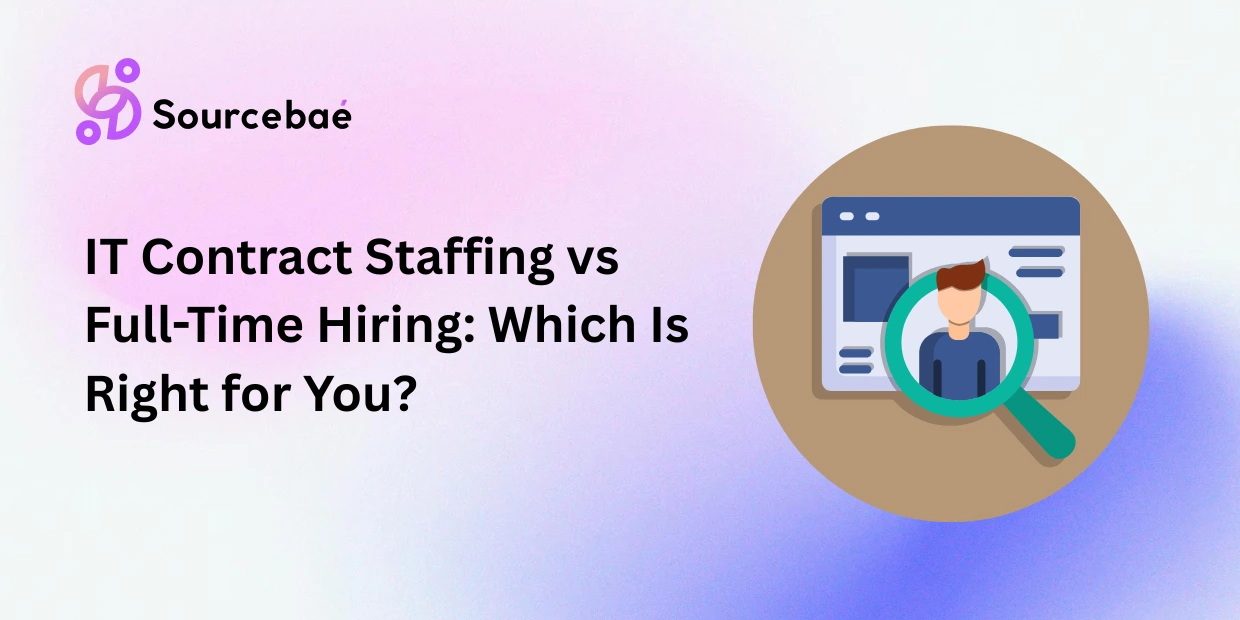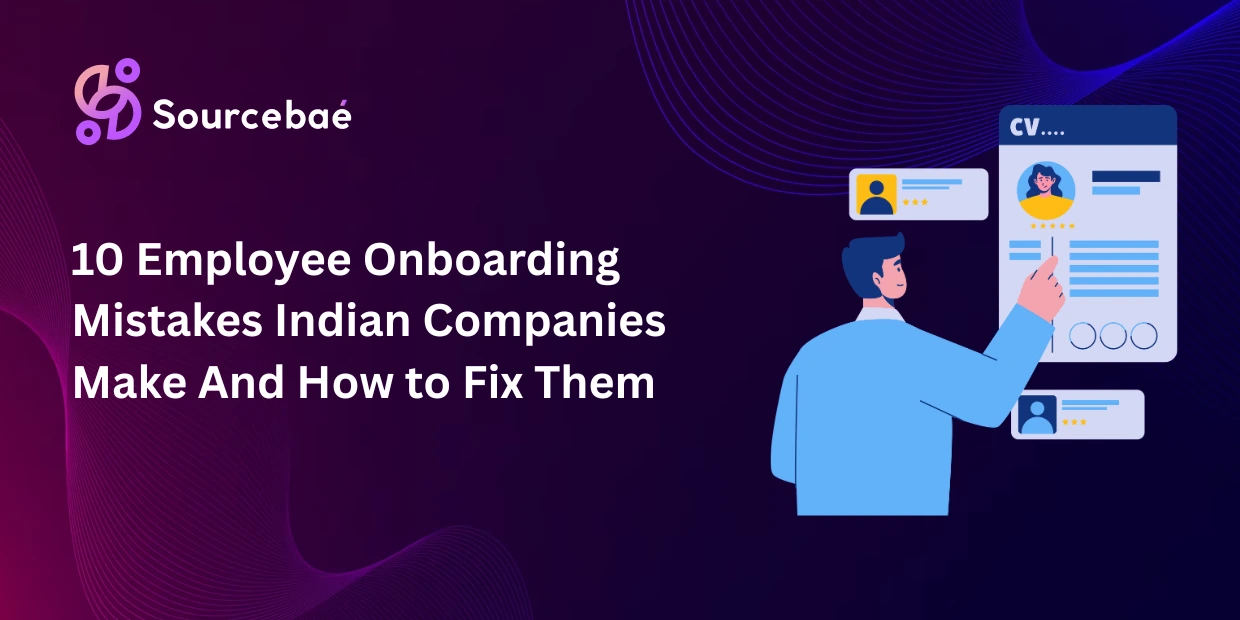The modern IT landscape demands agility, specialized expertise, and strategic workforce planning. As businesses navigate digital transformation and evolving market conditions in 2025, the decision between contract staffing vs full-time hiring has become a critical strategic consideration. With the U.S. Bureau of Labor Statistics projecting a 15% increase in IT jobs by 2031, companies must carefully evaluate their hiring approaches to remain competitive.
Understanding IT Contract Staffing vs Full-Time Hiring
Contract work involves hiring skilled professionals for specific projects or predetermined timeframes, typically through formal contractual agreements. These contract workers bring specialized expertise to address immediate business needs without long-term employment commitments. In contrast, full-time hiring involves bringing permanent employees into your organization with comprehensive benefits, ongoing training, and long-term career development opportunities.
The distinction extends beyond employment duration. Contract positions offer companies access to niche skills like artificial intelligence, cybersecurity, and cloud migration expertise that may not be available internally. Meanwhile, full-time employees provide stability, cultural alignment, and sustained knowledge retention that supports long-term business objectives.
The Rise of Contract Staffing in IT
India’s flexi staffing economy, which includes contract work, is projected to grow by 7% and reach $5.6 billion by 2025-26. This growth reflects a fundamental shift in how businesses approach talent acquisition. According to recent data, 64 million people worked as freelancers in 2024, with projections suggesting 86.5 million will become freelancers by 2027.
The IT industry leads this transformation, with companies increasingly leveraging contract work near me and remote contract talent to fill specialized roles. This trend is driven by the need for rapid scaling, access to cutting-edge expertise, and cost optimization in uncertain economic conditions.
Contract Staffing vs Full-Time Hiring: Comprehensive Comparison
Speed and Flexibility
Contract staffing offers unparalleled speed in talent acquisition. Companies can onboard qualified IT professionals within 2-5 days, compared to the 30-90 day timeline typical for full-time hiring. This rapid deployment capability proves invaluable for urgent projects, system upgrades, or addressing sudden skill gaps.
The flexibility extends beyond hiring speed. Contract vs full time arrangements allow businesses to scale their workforce dynamically based on project demands, seasonal fluctuations, or changing business priorities. Companies can quickly add specialized talent during product launches or reduce workforce size when projects conclude.
Cost Analysis: Contract vs Full Time
The financial comparison between contract work vs full time employment reveals nuanced cost structures. While contract hourly rates may appear higher initially ($60-115/hour for IT specialists), the total cost equation tells a different story.
Full-time employees incur substantial hidden costs:
- Base salary plus benefits totaling approximately $130/hour
- Payroll taxes ranging from 12-15% of wages
- Benefits packages averaging 30-40% of salary ($26,226 annually)
- Administrative overhead including HR processing, onboarding, and training costs
Contract workers, conversely, operate under a simpler cost structure:
- Direct hourly or project-based payments
- No benefits or payroll tax obligations for employers
- Minimal administrative overhead
Skills Access and Expertise
Contract job vs full time hiring offers distinct advantages in accessing specialized skills. Contract professionals often possess highly focused expertise in emerging technologies like AI, machine learning, DevOps, and cybersecurity. These specialists stay current with rapidly evolving technologies, bringing cutting-edge knowledge that may not exist within internal teams.
Full-time employees provide broader, more generalized skills that develop over time through training and cross-functional experience. This approach supports long-term capability building and knowledge retention within the organization.
Risk Considerations
Contract positions carry specific risks that organizations must carefully manage:
- Worker misclassification penalties can result in significant legal and financial consequences
- Limited cultural integration may affect team cohesion and project outcomes
- Dependency on external talent can create knowledge gaps when contracts end
Full-time employment offers greater legal protection and stability, with established employment law frameworks governing the relationship between employer and employee.
When to Choose Contract Staffing
Contract work proves most effective in these scenarios:
Short-term Projects: Digital transformation initiatives, system migrations, or software development projects with defined timelines benefit from specialized contract talent.
Specialized Skill Requirements: Emerging technologies like artificial intelligence, blockchain, or advanced cybersecurity often require expertise not available internally.
Urgent Deadlines: When projects have tight timelines, contract workers can provide immediate impact without lengthy recruitment processes.
Budget Constraints: Organizations with limited budgets for permanent hires can access high-level expertise through contract arrangements.
Testing New Technologies: Before committing to full-time hires in new technology areas, companies can evaluate capabilities through contract engagements.
When Full-Time Hiring Makes Sense
Full time or contract decisions should favor permanent employment for:
Core Business Functions: Critical operations requiring deep organizational knowledge and long-term commitment benefit from full-time employees.
Leadership Roles: Management positions requiring cultural alignment, team development, and strategic oversight are best filled by permanent staff.
Continuous Operations: Ongoing system maintenance, customer support, and operational roles require the stability of full-time employment.
Intellectual Property Development: Projects involving proprietary technology or competitive advantages benefit from the security and commitment of permanent employees.
Team Integration: Roles requiring extensive collaboration, mentorship, and cultural integration are better suited for full-time employees.
The Hybrid Approach: Best of Both Worlds
Many successful organizations adopt a contract vs full time hybrid strategy that leverages the strengths of both approaches. This model typically involves:
- Full-time employees handling core functions and leadership roles
- Contract specialists addressing specific projects and skill gaps
- Clear transition pathways from contract to permanent positions when appropriate
This balanced approach provides operational stability while maintaining the flexibility to access specialized expertise as needed.
Managing Contract Workers Effectively
Success with contract employees requires strategic management approaches:
Clear Expectations: Define project scope, deliverables, and success metrics upfront to ensure alignment.
Cultural Integration: Include contractors in team meetings and communications to foster collaboration while respecting contractual boundaries.
Competitive Compensation: Offer market-competitive rates to attract and retain top contract talent.
Knowledge Transfer: Implement processes to capture and transfer knowledge before contract completion.
Legal and Compliance Considerations
What is a contract employee from a legal perspective requires careful attention to classification rules. Misclassifying employees as contractors can result in:
- Back payment of taxes and benefits
- Penalties and interest charges
- Legal liability and potential lawsuits
Working with reputable staffing agencies can help mitigate these risks through proper classification processes and compliance management.
Future Trends in IT Staffing
The evolving workforce landscape suggests continued growth in flexible staffing models. Key trends include:
- Increased remote work capabilities expanding the global talent pool
- Growing emphasis on specialized skills over generalist capabilities
- Rising adoption of contract-to-hire arrangements
- Enhanced technology platforms streamlining contract worker management
Cost Optimization Strategies
Organizations can optimize their contract vs full time cost structure through:
- Regular benchmarking of market rates and total compensation costs
- Strategic workforce planning to balance permanent and contract talent
- Investment in technology platforms that efficiently manage contract relationships
- Development of preferred vendor networks for consistent quality and pricing
Conclusion
The contract staffing vs full-time hiring decision requires careful consideration of project requirements, budget constraints, timeline pressures, and long-term strategic objectives. Neither approach is universally superior; instead, the optimal choice depends on specific business circumstances and needs.
Contract work excels in providing rapid access to specialized skills, offering cost flexibility, and enabling quick scaling for specific projects. Full-time hiring provides stability, cultural alignment, and long-term capability building essential for core business functions.
The most successful organizations adopt a strategic approach that leverages both models appropriately. By understanding the strengths and limitations of each approach, companies can build agile, cost-effective teams capable of delivering exceptional results in today’s dynamic IT environment.
As the digital landscape continues evolving, the ability to strategically balance contract positions and permanent employees will become increasingly critical for organizational success. Companies that master this balance will gain significant competitive advantages in talent acquisition, cost management, and operational flexibility.






